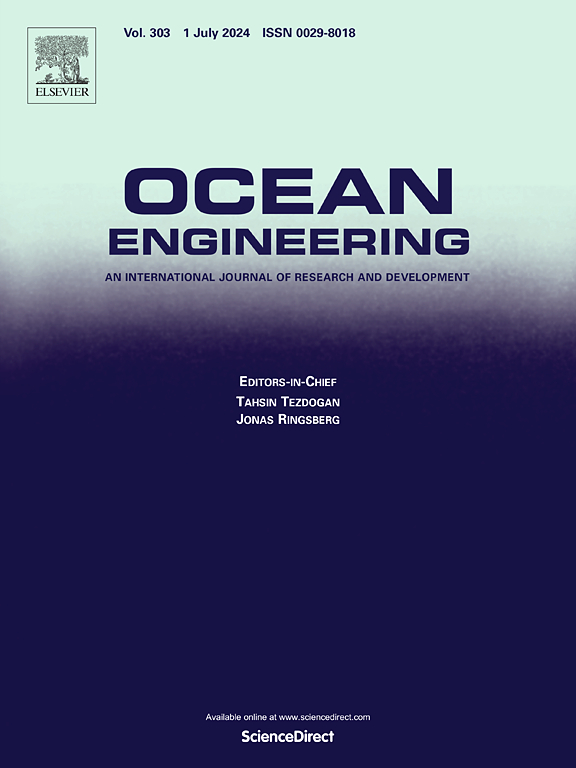Fully-coupled load-stress analysis of a floating offshore wind turbine for a parked design load case using HydroQus
IF 4.6
2区 工程技术
Q1 ENGINEERING, CIVIL
引用次数: 0
Abstract
For design of a floating offshore wind turbine (FOWT), time-domain load analysis including aerodynamic and hydrodynamic forces is essential. Because commonly used load analysis tools of OrcaFlex and OpenFAST do not account for non-slender substructure's elasticity, HydroQus, a hydrodynamic plug-in for Abaqus/Explicit, was used to obtain stress process in substructure. Load analysis for a 10MW FOWT, consisting of a semi-submersible substructure with three catenary mooring lines, was conducted for design load case (DLC6.2). Elastic and rigid shell elements were alternatively used for geometric modeling of the tower and substructure to view the elasticity effect. DLC6.2 represents a parked condition, so rotor aerodynamics were ignored and the rotor-nacelle assembly was modeled using rigid elements. The mooring lines were modeled using beam and joint elements. To apply the drag forces, additional beam elements were placed along the tower and substructure columns. The load analysis results using HydroQus were validated by comparing OrcaFlex results. For the rigid element model, HydroQus and OrcaFlex showed highly consistent motion and mooring tension histories. For the elastic element model, stress mostly developed at two interfaces: the substructure column-deck connections, and the tower base. Due to the substructure elasticity, HydroQus produced a reduced mooring tension history than OrcaFlex.
求助全文
约1分钟内获得全文
求助全文
来源期刊

Ocean Engineering
工程技术-工程:大洋
CiteScore
7.30
自引率
34.00%
发文量
2379
审稿时长
8.1 months
期刊介绍:
Ocean Engineering provides a medium for the publication of original research and development work in the field of ocean engineering. Ocean Engineering seeks papers in the following topics.
 求助内容:
求助内容: 应助结果提醒方式:
应助结果提醒方式:


